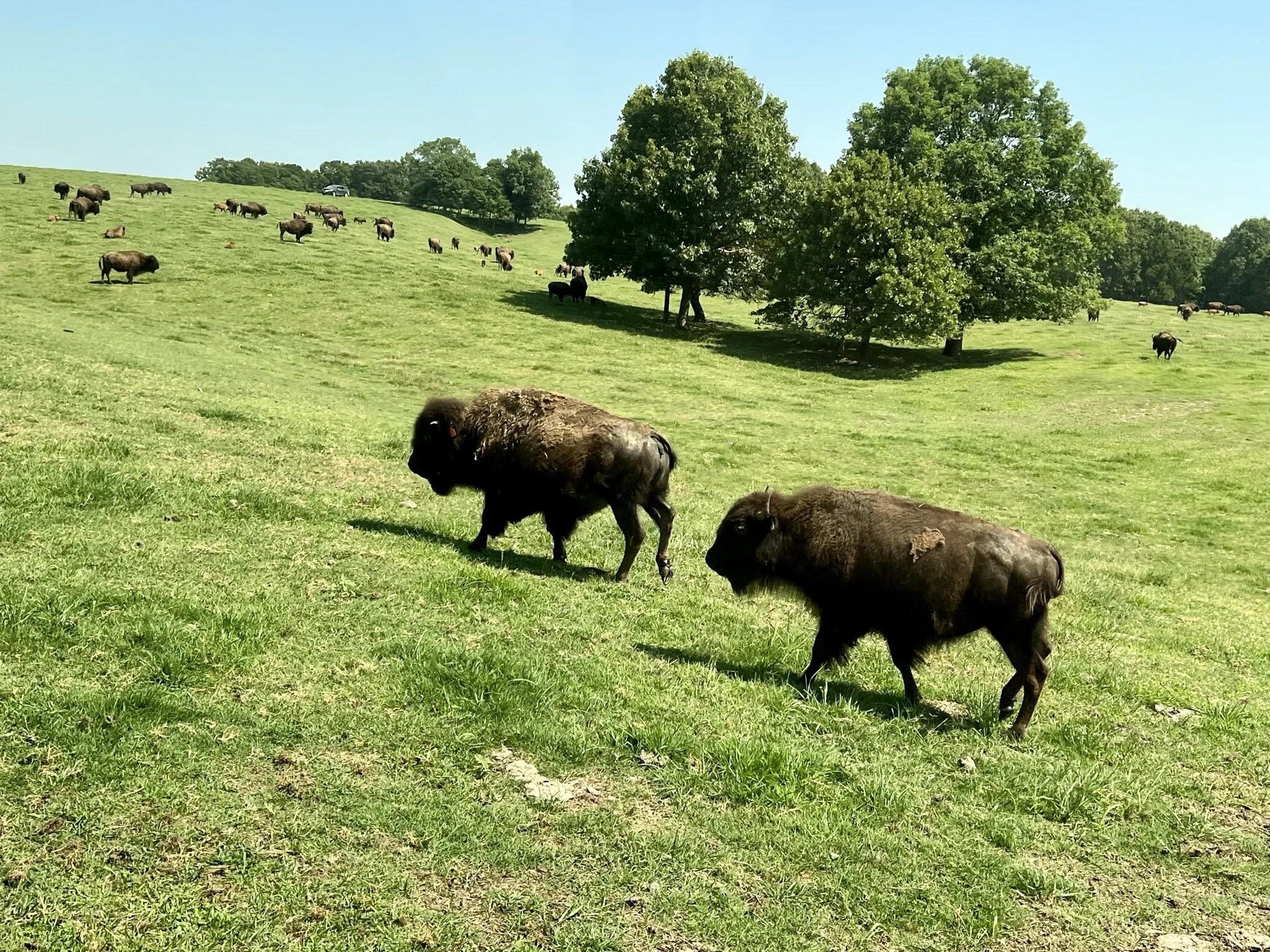Did You Know? Buffalo!
Buffalo and bison are technically two different animals. Bison is the animal we are familiar with here, native to North America and Europe. Buffalo are native to Africa and Asia. They are both in the Bovidae family, but are not closely related.
Why do we call bison buffalo?
We tend to use the word “buffalo” - it is now commonplace language. Why is that? Historians believe that early European explorers created the misnomer. According to the National Park Service, it is possible it stemmed from the French word “boeuf”, meaning beef. Others say that bison hides resembled buff coats commonly worn by military men at the time, inspiring the name.
“Whatever we call them, the animal has been and still is important to us as Cherokee”
History
Bison is commonly associated with the Tribes of the Great Plains. However, bison played an important role for Cherokee people as a vital food source.
Prior to colonization, woodland bison roamed our homelands and all along the Eastern coast. With European colonization, woodland bison were driven to extinction from the east and southeast parts of the present-day United States. The closely related American bison from the Great Plains were nearly wiped out (in the early 1800s, there were over 30 million but by 1889, only a few hundred remained).
Our Herd
Cherokee Nation had a bison herd in the 1970s and began a herd again in 2014, which has been expanding in recent years. Our tribe’s bison herd lives at Bull Hollow Buffalo Ranch, which had approximately 350 in 2022 (having come from South Dakota, North Dakota, and Wyoming). As tribal citizens, we collectively own and are responsible to this herd, pictured above and below. As the herd grows, there is discussion on using it to provide healthy nutrition for vulnerable populations.
For many, bison are a symbol of freedom, strength, and resiliency. Bison offer a way to reconnect to our history and cultural roots from traditional homelands.
Nutrition
Bison is leaner (less fat and saturated fat) and lower in calories compared to beef, with nearly identical protein amounts as beef.
ᏣᎳᎩ Tsa-la-gi (Cherokee) language practice
ᏯᎾᏌ ya-na-sa = buffalo/bison
ᏯᎾᏌ ᎭᏫᏯ ya-na-sa ha-wi-ya = buffalo/bison meat
ᎠᎩᏲᏏᎭ a-gi-yo-si-ha = I am hungry!
ᏯᎾᏌ ᎭᏫᏯ ᎠᎩᏲᏏᎭ ya-na-sa ha-wi-ya a-gi-yo-si-ha = I am hungry for bison meat!
Bison (Buffalo) Indian Tacos
About 4-6 servings
INGREDIENTS
1 Tablespoon oil
½ yellow onion, diced
1 lb. ground bison
2 teaspoons chili powder
1 teaspoon cumin
½ teaspoon salt
½ teaspoon black pepper
½ teaspoon paprika
¼ teaspoon garlic powder
⅛ teaspoon crushed red pepper
⅛ teaspoon chipotle chili powder
1 (15-ounce) can dark red kidney beans, rinsed and drained
1 (14.5-ounce) can diced tomatoes, drained
Optional toppings:
Shredded cheese
Diced tomatoes
Shredded lettuce
Sour cream
Sliced black olives
Diced onions
Cilantro
INSTRUCTIONS
In a large skillet, heat the oil over medium-high heat. Add the onions and cook for 2-3 minutes until they begin to soften. Add the meat and brown with the onions. When the meat is no longer pink, reduce the heat to medium-low and add the spices, beans, and tomatoes. Stir, then cover and simmer for 10 minutes.
To make tacos, place your frybread on a plate, add a scoop of the meat mixture, then add any toppings you like, piling it high. Serve immediately and enjoy!
— Sabrina McKinney

